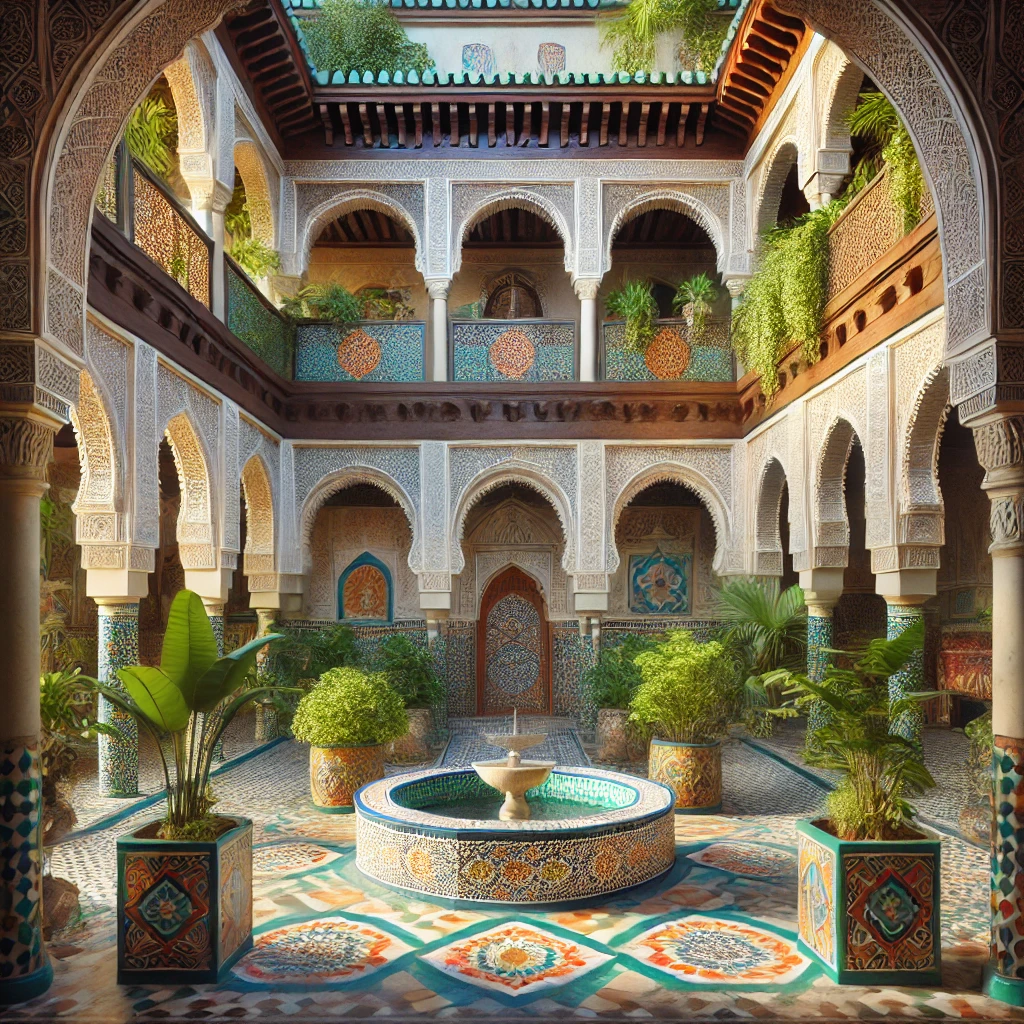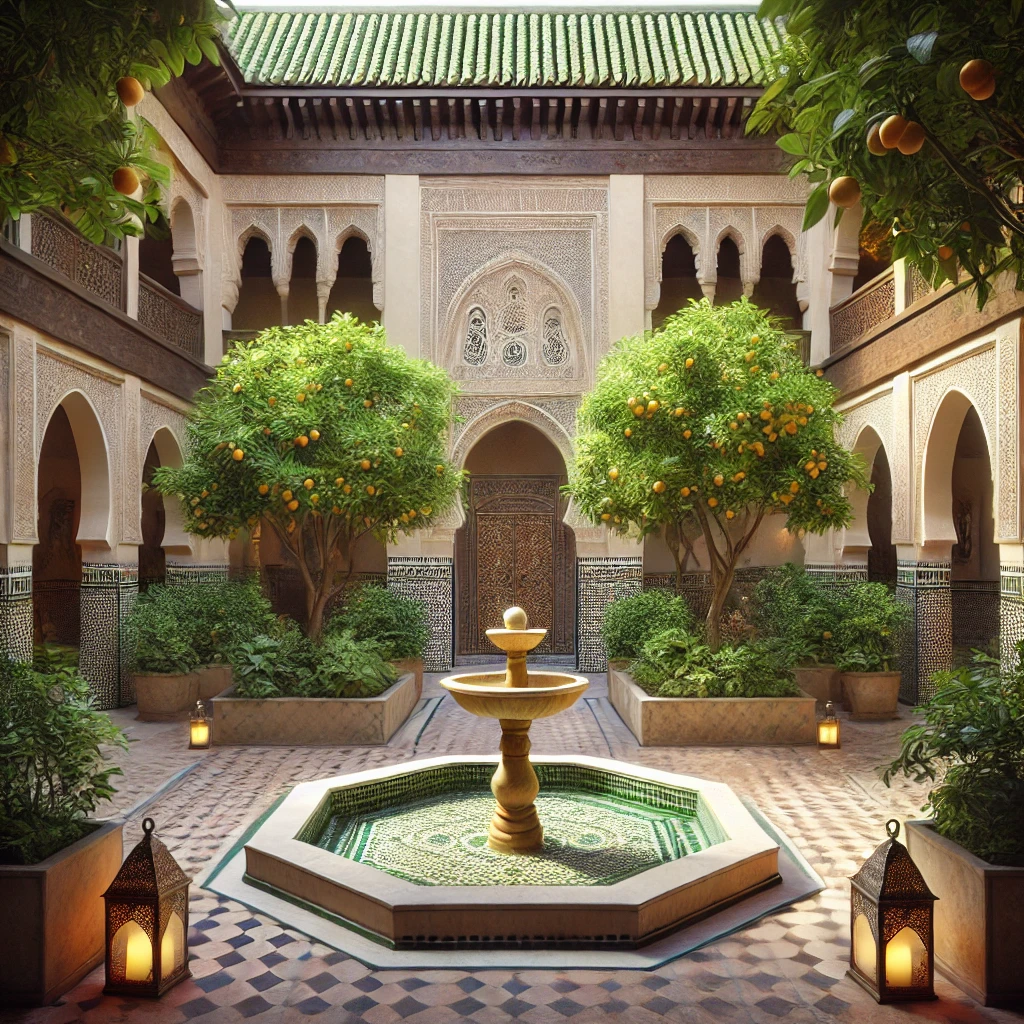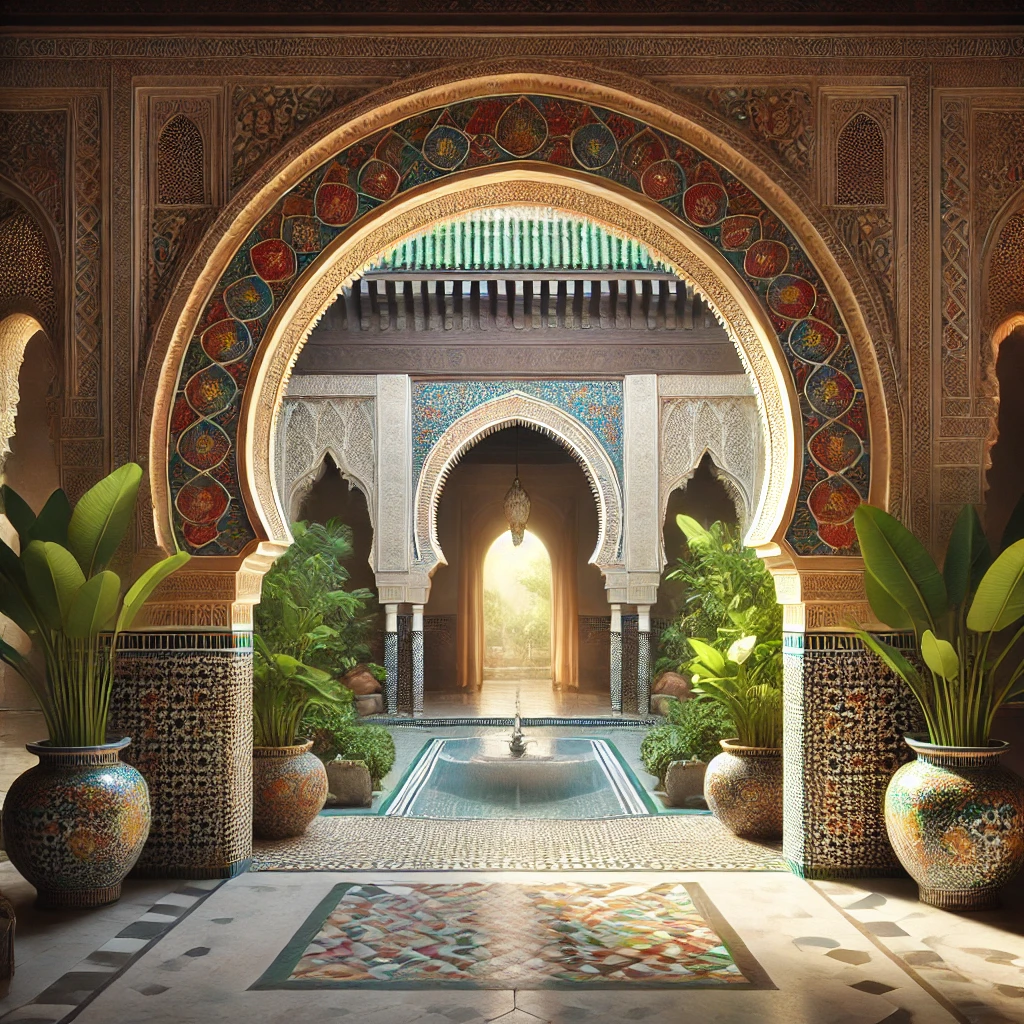
The Spiritual and Cultural Role of Fountains in Moroccan Homes
Fountains are an iconic feature of Moroccan architecture, found in traditional riads, gardens, and public spaces. More than just decorative elements, fountains in Moroccan homes serve profound spiritual and cultural purposes. They embody a deep connection to nature, offer a tranquil environment, and symbolize spiritual purity and hospitality. The presence of water is central to Moroccan culture, reflecting the cultural values of life, tranquility, and balance. Let’s explore the unique role that fountains play in Moroccan homes, from their spiritual significance to their contribution to everyday life.

The Evolution of Moroccan Architecture: A Journey Through Time
Moroccan architecture is a rich tapestry woven from centuries of history, cultural exchange, and the blending of diverse influences. The evolution of Moroccan architecture reflects the country’s dynamic past, shaped by indigenous Berber traditions, Islamic culture, Andalusian influences, and later European colonial impacts. From ancient kasbahs to modern riads, Moroccan architecture is both a visual history book and a testament to the adaptability and artistry of its people. Here’s a look at how Moroccan architecture has evolved over the centuries.

The Influence of Andalusian Art on Moroccan Architecture
Moroccan architecture is a captivating blend of diverse influences, shaped by its history, geography, and cultural exchange. One of the most profound influences comes from Andalusian art—the artistic and architectural styles brought from the Iberian Peninsula during the era of Al-Andalus. The deep historical ties between Morocco and Andalusia are evident in the intricate designs, elegant arches, and decorative elements that define Moroccan architecture today.

The Role of Courtyards in Moroccan Architecture
Moroccan courtyards are the heart of traditional homes, providing a tranquil oasis that stands in stark contrast to the bustling medina streets outside. These inward-facing open spaces are fundamental to Moroccan architecture, reflecting cultural values, practical design, and a connection with nature. Whether in a riad or a kasbah, the courtyard plays a vital role in defining how these homes function and feel.

Moroccan Arches and Doorways: Key Elements of Traditional Architecture
Moroccan architecture is a captivating blend of influences—Islamic, Berber, Moorish, and Andalusian—that has evolved over centuries. Among the most distinctive features of this rich architectural tapestry are the arches and doorways. These elements not only serve structural purposes but also convey cultural depth, historical influences, and the artistry that defines Moroccan design. Whether found in a grand palace or a modest riad, Moroccan arches and doorways bring a sense of elegance, warmth, and a connection to the country’s heritage.

Understanding Moroccan Riads: Architecture and Cultural Significance
A riad is a traditional Moroccan home—it is an embodiment of culture, history, and architectural artistry that makes Morocco unique. Originally built as private residences for wealthy families, riads are designed to create a peaceful sanctuary in the midst of the bustling medina. Understanding the architectural elements and cultural significance of riads helps to appreciate why they remain highly sought after for both residential and hospitality purposes today.
